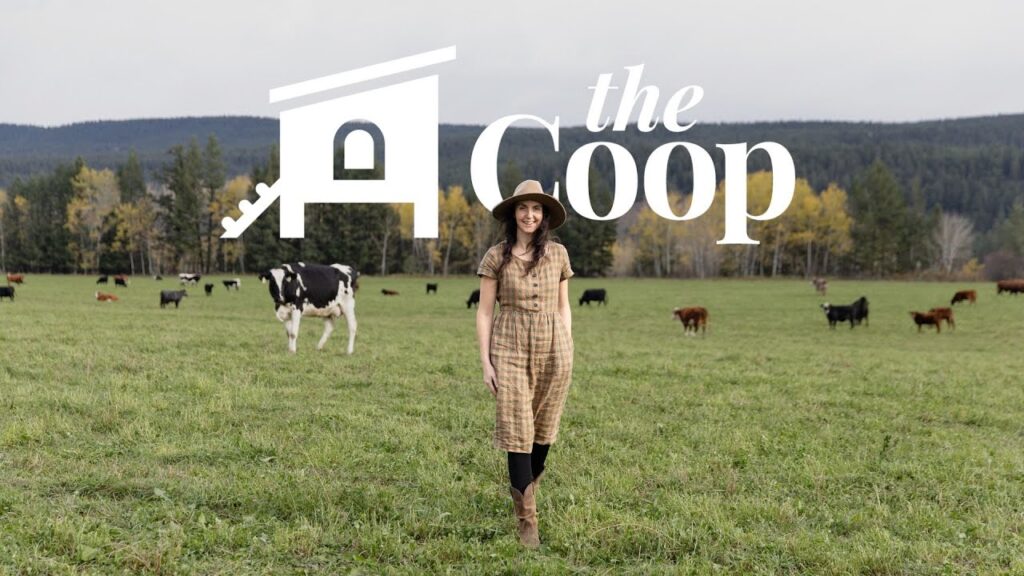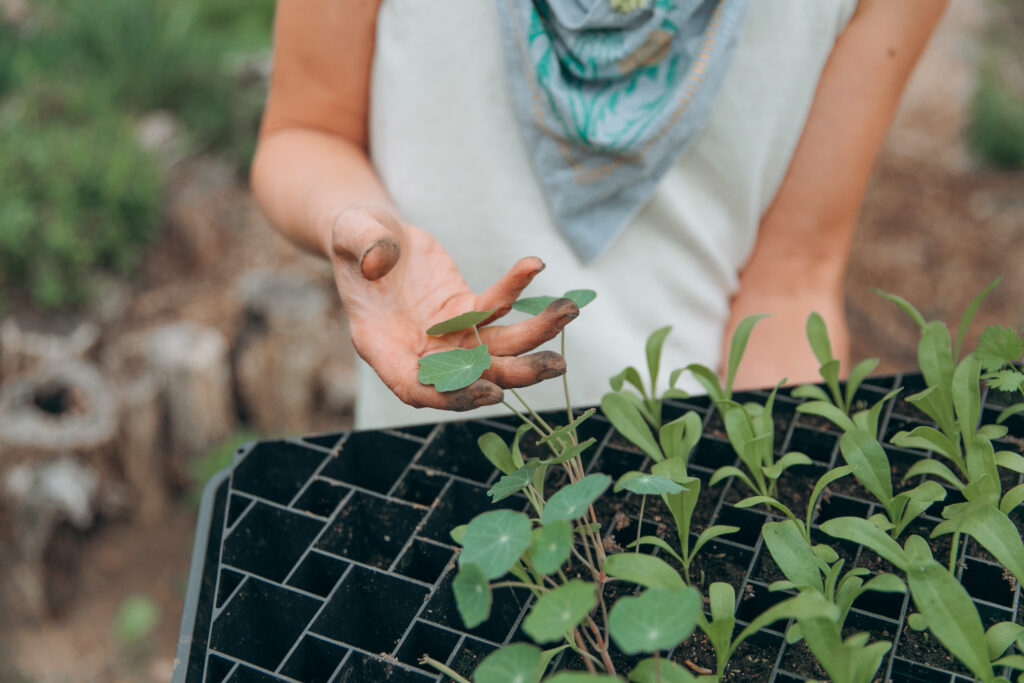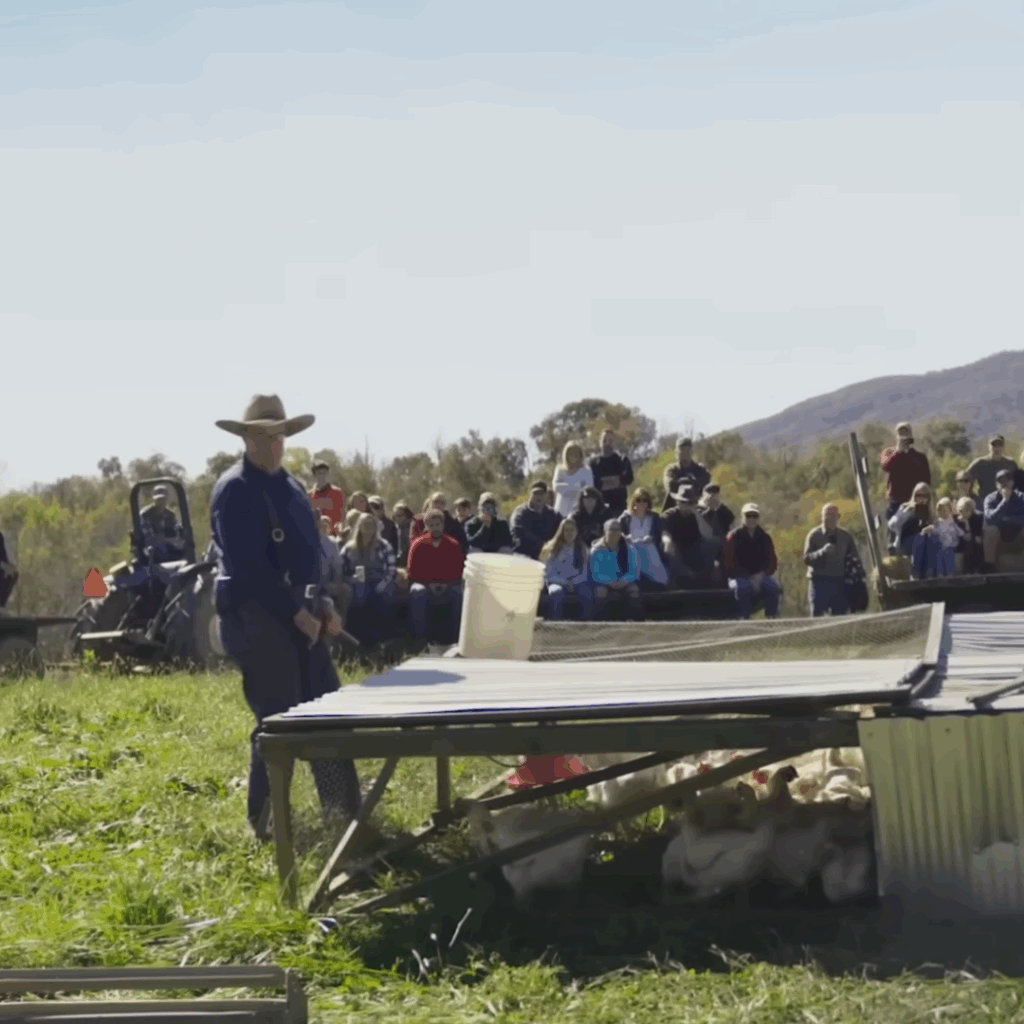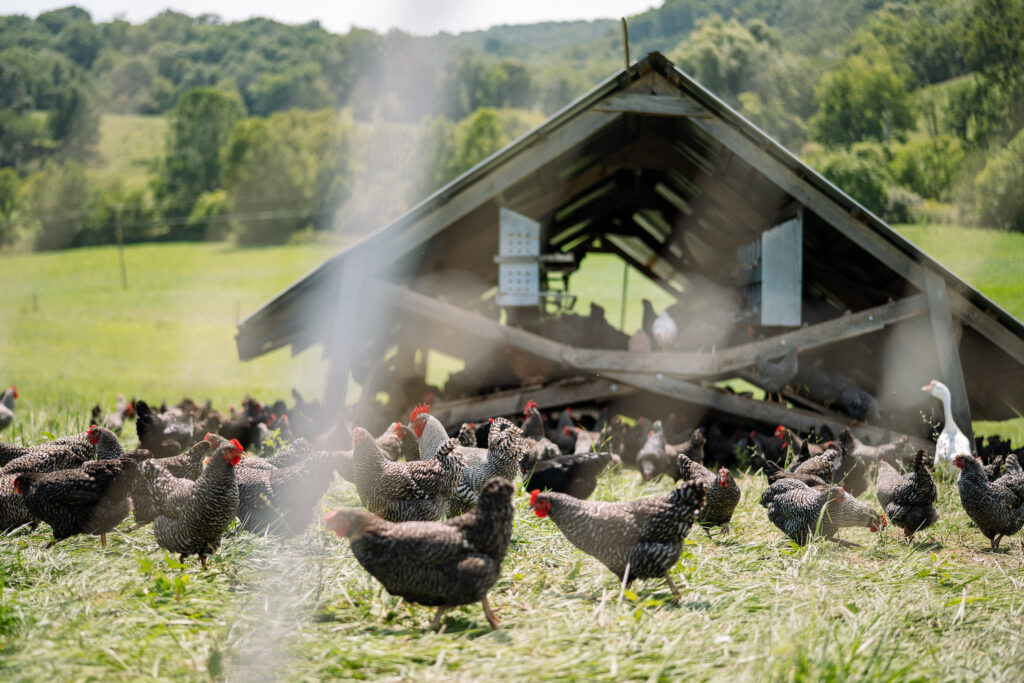During one such moment of contemplation, I stumbled upon the intriguing tale of Oddball, a Maremma dog who guarded penguins in Australia from predatory foxes.
As I delved deeper into Oddball’s story, I couldn’t help but draw parallels to my farming journey. I was particularly struck by the fact that Maremmas like Oddball excel at guarding poultry. This discovery sparked a cascade of thoughts. If a Maremma could protect penguins, it could safeguard my cherished flock of ducks, geese, and chickens.
Creating an Inventory of Needs and Constraints
Your story will be different than mine, and every farm and family has different needs. Choosing the right livestock guardian dog breed requires careful consideration of your farm’s needs and the unique constraints of your environment. Just as a composer carefully selects the instruments for an orchestra, a homesteader must identify the traits and qualities that will best align with the rhythms of their land.
Creating an inventory of these needs and constraints is essential before diving into the world of livestock guardian dog (LGD) breeds. Consider the size of your farm, the types of livestock you raise, and the predators that roam the surrounding wilderness. Take stock of the climate, terrain, and any potential challenges that may arise. By forming a comprehensive understanding of your farm’s dynamics, you can better guide your choice of breed.

The Power of Lineage and Environment
While breed characteristics certainly play a role in selecting an LGD, it’s important to remember that individual dogs possess distinct personalities within every breed. A breed’s strengths and weaknesses can be greatly influenced by its lineage and the environment in which it was raised.
When I brought Toby Dog, our first Maremma, onto the farm, I quickly realized that his journey was not just about breed traits but also the experiences he had encountered before joining our homestead.
Toby had an instinct to protect, but transitioning to his new role was challenging. It was a poignant reminder that while breed considerations are important, assessing the dog’s upbringing and the conditions it was exposed to is equally critical. (To hear that story from Toby Dog’s perspective, you should check out my new book, Toby Dog of Gold Shaw Farm, for the whole story.)
A Journey Through Breeds: An Overview
Anatolian Shepherd: Hailing from the rugged terrains of Turkey, Anatolian Shepherds are revered for their fierce loyalty and ability to confront large predators. Their imposing presence alone often serves as a deterrent, and their innate intelligence makes them adaptable guardians. However, their independent nature may require consistent training and socialization.
Great Pyrenees: Originating from the Pyrenees Mountains of France, the Great Pyrenees are known for their calm demeanor and protective instincts. They form deep bonds with their charges and can be gentle giants with the livestock they guard. Their thick coat helps them withstand harsh weather, but their size may be a consideration for smaller farms.
Maremma Sheepdog: Hailing from Italy, the Maremma Sheepdog has a strong heritage of guarding livestock. Their distinctive white coats enable them to blend in with the flock and their vigilant nature ensures they are always on guard. However, their independence may require early socialization and training.
Karakachan: This ancient Bulgarian breed is revered for its adaptability to various climates and its tenacity in confronting predators. Karakachans are deeply bonded to their charges and are known for their intuition in identifying potential threats. Their protective nature and versatility make them well-suited for a range of livestock.
Akbash: With origins in Turkey, the Akbash is characterized by its striking white coat and keen awareness. They are intelligent dogs that thrive in open spaces, making them ideal for larger farms. Their loyalty to livestock and humans is commendable, but their energy levels may necessitate regular exercise.
Central Asian Shepherd: Hailing from the vast landscapes of Central Asia, these dogs are renowned for their fierce loyalty and adaptability to challenging environments. They have a strong instinct to protect and are often used to guard large livestock such as cattle and sheep. Their independence and courage make them a formidable guardian.
Kuvasz: Originating from Hungary, Kuvasz dogs are known for their intelligence and versatility. They excel in guarding livestock and can also be trained for other tasks. They form strong bonds with their charges and are protective. Their coat requires regular grooming, but their dedication to their duties is unwavering.
Pyrenean Mastiff: Sharing its roots with the Great Pyrenees, the Pyrenean Mastiff is a powerful and imposing guardian breed. They are known for their gentle and affectionate nature with their charges, yet they possess a formidable presence that deters potential threats. Their protective instincts and devotion to their livestock make them exceptional guardians.
Kangal: Originating from Turkey, the Kangal is a breed with a history of protecting livestock from predators. They are known for their strength and agility, allowing them to confront even the most formidable threats. Their loyalty to their charges is unwavering, and their calm demeanor makes them suitable for various farm settings.

When Your Dog Joins the Farm
Once I decided to get an LGD, I did my research and found what seemed to be an excellent dog. But questions always remain. I watched with anticipation and trepidation when Toby Dog arrived on our farm. It was a leap of faith to welcome this new guardian into our fold, knowing that his presence would forever alter the dynamics of our homestead.
Toby’s integration was a testament to the individuality of dogs even within the same breed. He was a quick learner, his instincts guiding him as he forged connections with our ducks, geese, and chickens. His mere presence transformed our poultry yard, infusing it with a sense of security only a guardian could provide.
Yet, as the days turned into weeks, I realized that his journey was one of adaptation. Toby’s interaction with the livestock was a delicate dance, his instincts melding with our human guidance. It was a poignant reminder that while breeds possess certain traits, each dog is unique, shaped by its lineage and experiences.
Finding Harmony with LGDs
The choice of an LGD breed is not a one-size-fits-all decision but rather a harmonious alignment of needs, traits, and environments. Whether it’s the steadfast Anatolian Shepherd, the gentle Great Pyrenees, the intuitive Maremma Sheepdog, the adaptable Karakachan, or the energetic Akbash, each breed offers a unique melody to the orchestration of your farm.
As you consider the array of LGD breeds, remember that their strengths and weaknesses are influenced by more than just genetics. A dog’s upbringing, experiences, and the environment in which it thrives are equally impactful. Finding a good, ethical breeder and assessing the parents’ traits and the conditions of their upbringing can be invaluable in your decision-making process.
Ultimately, the journey to find the perfect LGD breed is a voyage of discovery where your farm’s needs meet the dog’s nature. It’s a testament to the harmonious relationship between humanity and the natural world, a partnership that resonates with the echoes of the past and the promise of a sustainable future. And so, as you embark on this path of choosing an LGD breed, remember that you are not merely selecting a guardian; you are inviting a guardian of traditions, a protector of harmony, and a sentinel of the land into your homesteading journey.






Leave a Reply